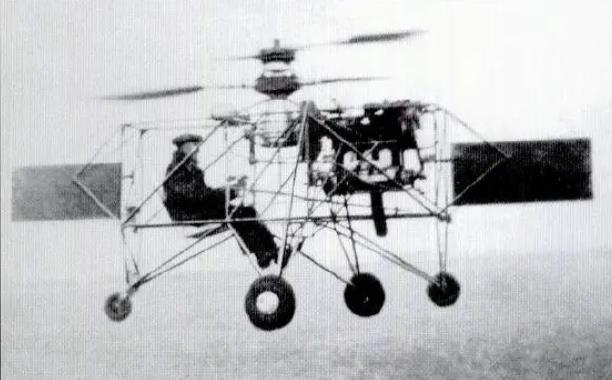Rieseler was not dismayed by the crash of the R1 and immediately began work on his next helicopter, the RII. The RII was a two seat helicopter powered by a pair of coupled Sh 14a engines. The twin engines were envisioned to ensure sufficient power to land safely on one engine.
The initial test flights done by Mohn were satisfactory, however on a later flight on December 18th, 1937, the connecting bolts and pylons between the fuselage and rotor head gave out and the RII crashed. Though slightly injured in the crash this was to be Mohn's last helicopter flight. He decided that two crashes were enough helicopter flying for him.
| Type |
2 seat helicopter |
| Engine |
2 Siemens Sh 14a |
| Dimensions |
Length , height , span , wing area , |
| Weights |
Empty , loaded , max. take off weight |
| Performance |
Max.. speed , cruising speed , range , endurance , service ceiling , climb |
| Type |
Werk.Nr |
Registration |
History |
|
|
|
Crashed December 18th 1937 |
The designer, undaunted, built a new, improved, two-seat version, the R-Il. with two 150 hp (110 kW) Siemens engines, flown in 1937. Higher power and increased diameter of the rotors resulted in markedly improved performance of the helicopter, with flights lasting up to 20 minutes, and the maximum altitude was 60 m. Unfortunately, this helicopter was heavily damaged too. when the test pilot made a violent dive recovery immediately above the ground. Construction of a third version of the helicopter was terminated in 1938 by the sudden death of the designer.

